Advice on newly acquired fiddle leaf fig tree (ficus lyrata)
gyoselyn
7 years ago
Featured Answer
Sort by:Oldest
Comments (7)
gyoselyn
7 years agoRelated Discussions
Pruning Ficus Lyrata (fiddle leaf fig)
Comments (646)Hello everyone! I think from everything I've read in this thread that my plant has been suffering from overwatering and/or soggy soil. I got it in late January and after my second watering it developed a few very small brown marks on the edges of the leaves. Suspecting over watering as the cause, I let it dry out (until it no longer felt damp and spongey through the drainage hole) before watering again. This process meant it was about 2.5-3 weeks between watering and sadly the brown and blackish spots on the leaves have continued to get worse after every watering. With what I've read I now believe the soil is just staying soggy too long. (FYI when I water I give it about 3 cups, allowing one cup at a time to soak in. At least half a cup flows out the drainage holes on the third cup of water.) My plan now is to repot with a soil amendment and a wick. I'd like to do some root pruning as well since I can barely get the moisture meter in the soil through the roots, but I think I read in a previous post from Al that I should wait until it starts growing again and the weather is warmer. In the mean time, will mixing my regular potting soil with perlite as well as adding a wick offer a noticeable improvement for drainage for now? Then in the summer I can source better soil mix components and address any potential root issues? Alternatively, I can just water with more frequency and use less water until summer? Here are some photos of the FLF in the late afternoon on a cloudy day. This plant lives about 3 feet away from a S/SW window and doesn't receive any direct sunlight. Here is evidence that the plant has dropped a few leaves. The six leaves that fell off were the worst looking, and the leaves with the spots (shown above) are headed in that direction. And here is the beautiful new growth since I got it in late January (though now it has stopped and the tiny bud here doesn't seem to have changed in about a month): I look forward to learning even more, so thanks in advance for your advice and expertise :)...See MoreFiddle Leaf Fig Emergency (Ficus Lyrata)
Comments (7)I'm attaching some pictures to get some advice as to what should be our plan of action. Should we snip off the new growth low on the trunk, prune it back and root out cuttings, cut into it to try to force some back budding on the existing branches? The new growth produced by back-budding can be removed at any time. I'd leave it for now because it could eventually become a welcome part of the composition. I would take the opportunity to bring the top of the plant back under control. The plant would look better if the top was more dense and compact. If you decide you want to do that, we can talk about how to go about it so the tree begins progressing toward something that looks attractive and natural - a tree that will attract the eye because it is balanced and looks nice instead of something that jars the eye because the subconscious recognizes something is 'wrong' with the composition. There's no judgment in that statement - just pointing out that having a plan is almost a prerequisite to having an attractive tree. It's better to remove some of the 'growth for growth's sake' growth early on than later when it would take a more radical approach to reclaim the tree's eye appeal. When should we try to repot it. Now or next June, around Father's day. I wouldn't repot it any later than the second week of Aug, and earlier is better. The tree needs summer warmth and long bright days to recover from a repot and put away a little energy for winter. Pot up at any time, though potting up while the tree is in it's winter quiescence isn't the best of plans unless it's to alleviate roots that are REALLY tight, and you only pot up slightly. I only rarely pot up, choosing instead to repot. The occasional up potting I might do would be on a badly root-bound plant that I just couldn't find the time to repot. Even then it's a temporary measure taken to get the plant through until a time where repotting is appropriate. I know the recommended potting mix well from reading on the site. If you limit your soil choice to a soil you can water freely (to beyond complete saturation) at any time of year w/o having to worry about impaired root function or dead roots due to a soil soggy for extended periods, you're golden. Also, is terra cotta a good pot for the fig? Yes - very good. Pots that allow evaporation through pot walls are healthy choices for plants - not always the most attractive or lightest, but plants definitely like them. Al...See MoreFiddle Leaf Fig / Ficus Lyrata: Multiple Trunks into One?
Comments (172)Hi, Gina - thank you for the kind words. I now have it in a south facing window, that is mostly covered by a light filtering shade, 4 feet from a west facing window in a fairly bright room, and next to a humidifier. So it's sort of between a S and W window? I wondered if I did a full repot and root trim if I could possibly put it in a slightly smaller pot? I plan to use a mixture of 1:1:1 potting soil, perlite, and repti-bark, and possible put some empty bottles in the bottom as ballast. Yes, you'll be able to put it in a smaller pot after the root reduction, but do make sure you don't cut yourself short insofar as space for roots to run, given you'll be adding ballast. I also hoped to turn it into a standard or “mother/daughter”. It has 6 stems that all seem to be from the same plant and I wonder what the best way to convert it would be? A mother/daughter arrangement would look like the larger tree hovers protectively over the daughter tree. When you select the two trees, be sure the larger doesn't dirsctly overhang the smaller and shade it out. The two should be offset a bit. This can usually be accomplished best by allowing the two trunk lines to be directly above each other for a distance before the daughter's trunk turns toward you. This arrangement has a front and a back for viewing purposes, but it should be rotated regularly so all sides get their share of light. Remove the surplus stems.branches unnecessary to the composition by pruning them back to the trunk. Start them as cuttings if you like. I read about removing stems to accomplish this but also about leaving stems, because those leaves have value to the plant, while you focus on strengthening one stem or binding a few together? Honestly, I just read so much information at once in the past couple days that I am a little overwhelmed :) Not pertinent at this point - save that for later. I would like to give it the correct soil and conditions for it to thrive. I think you can expect good results with what you proposed above, and the ballast will definitely work in your favor. Is it too late for a repot and root pruning in zone 7b? If there was no pressure to get the plant out of the pot/soil it's in now, I'd probably wait. If you think the combination has potential to dump a serious problem before next spring, go ahead and repot. It would be best if, after the repot, the plant could be sited outdoors in dappled or open shade and out of wind while it recovers. You have a longer growing season than I do and I set Aug 1 as my last repot date for Ficus ..... but all my trees are outdoors, which makes a very significant difference. Start fertilizing when you're seeing new growth. Make sure you keep the roots WET for the entire duration of the repotting session. Have everything ready to go before you start. Add a wick to the pot too, if you like. Questions? Al...See MoreFicus lyrata fiddle leaf fig - all leaf drop -HELP
Comments (1)My before and after no leaf current state of my plant. The above post has all my information. Not sure why the post made me split it...See Moregyoselyn
7 years agomat68046
7 years agoDave
7 years ago
Related Stories

HOUSEPLANTSSee How Fiddleleaf Fig Trees Can Liven Up Your Decor
The tropical houseplant with big green leaves adds a cheerful and striking design element to rooms
Full Story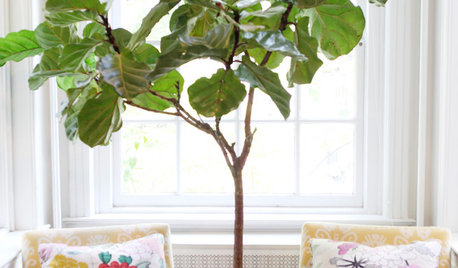
HOUSEPLANTSPlay Up Some Fiddleleaf Figs for a Lively Indoor Tune
Strike a dramatic chord in a minimalist scene or a country note in a rustic setting — fiddleleaf fig plants harmonize with any style
Full Story
HOUSEPLANTS8 Essentials for Healthy Indoor Plants
Houseplants add so much to our homes — and can thrive when grown in the right conditions. Keep these tips in mind
Full Story
HOUSEPLANTS10 Top Plants to Grow Indoors
Brighten a room and clean the air with a houseplant that cascades artfully, stretches toward the ceiling or looks great on a wall
Full Story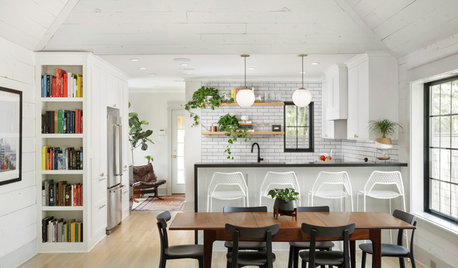
CONTAINER GARDENSHappy Houseplants, Happy People
Potted plants add life and beauty to a room. Learn easy ways to keep them healthy
Full Story
DECORATING GUIDESThe Dumbest Decorating Decisions I’ve Ever Made
Caution: Do not try these at home
Full Story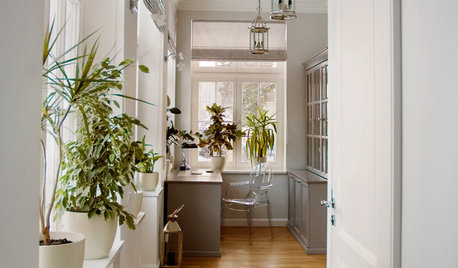
HOUSEPLANTSHow to Create an Indoor Landscape
Apply principles and elements of design to help your indoor garden flourish
Full Story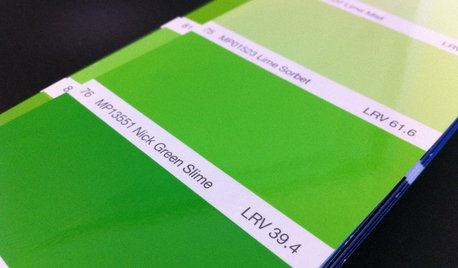
DECORATING GUIDESFrom Queasy Colors to Killer Tables: Your Worst Decorating Mistakes
Houzzers spill the beans about buying blunders, painting problems and DIY disasters
Full Story
DECORATING GUIDESDitch the Rules but Keep Some Tools
Be fearless, but follow some basic decorating strategies to achieve the best results
Full Story
GARDENING AND LANDSCAPINGGrow a Lush Privacy Screen
No need to wait forever for patio privacy the green way. These 10 ideas will get your screening up and running in no time
Full Story



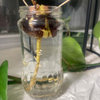
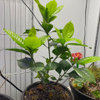

Dave